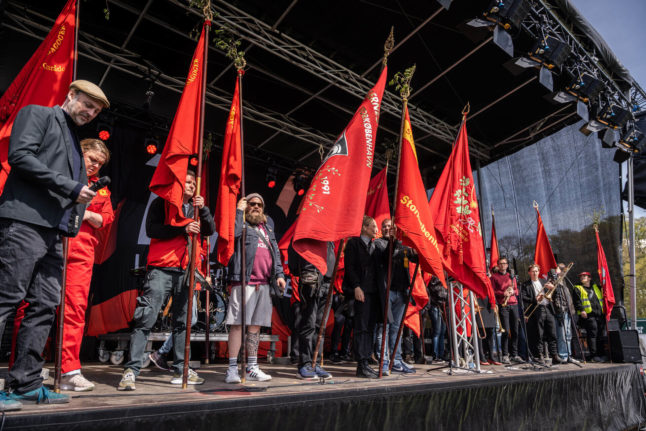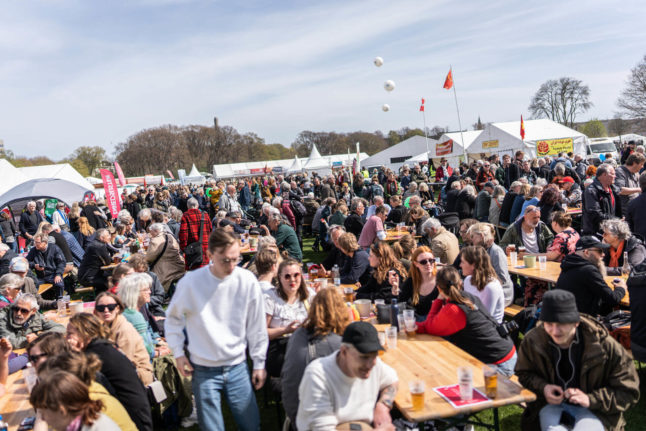International Workers’ Day, or Labour Day, is an occasion keenly celebrated by thousands across Denmark, a country known for its social democratic traditions.
The day is not a public holiday like in other countries including Sweden and Norway, but many Danes treat it with just as much importance as their neighbours do.
In Denmark, the state does not give you the day off on May 1st. In other words, it’s not a public holiday like Christmas Day, Ascension Day or Maundy Thursday, for example.
However, you could be forgiven for thinking that May 1st is a national day off if, for example, you pass by Fælledparken in Copenhagen on Labour Day. You’ll see huge gatherings of workers carrying banners, people gathering to eat and drink, and major speeches by both union leaders and politicians.
Many workers in Denmark do in fact have the right to a half or full day off on May 1st. This is not provided by a public holiday but rather by the collective bargaining system, the Danish labour model on which working terms are negotiated and agreed between trade unions and employers’ confederations.
READ ALSO: How does Denmark celebrate May 1st?
In neighbouring Sweden and Norway, however, Labour Day has the status of a full public holiday. A closer look at the history of the date in each country perhaps gives a little more context as to why.
Labour Day was established internationally 1890, not long after workers around the world chose the first day of May to campaign for and celebrate the introduction of the eight-hour working day.
At this time, Denmark’s union movement attended large congresses in France to celebrate the centenary of the French Revolution, and the Danish worker’s day movement was born.
International Workers’ Day was celebrated for the first time in 1890 in Fælledparken, which remains the quintessential location for speeches to this day.
Labour Day celebrations – and protests – also have a long history in Norway. May 1st became an officially recognised holiday in the country over 75 years ago, although the day was also marked in decades preceding state recognition (keep in mind that Norway only became independent in 1905, after being in unions with Sweden and Denmark before this).
The first May 1st parade organised by the workers’ movement in Sweden also took place in 1890. Unlike in Denmark, the first proposal to make it a public holiday came in 1926.
In 1938, it officially became a public holiday for the first time since 1772, coming into force the next year. It was also the first non-religious holiday to be designated a public holiday in Sweden.
So what was May 1st Sweden before 1772, a date that predates Labour Day by over a century?
In preindustrial Swedish society, May 1st was celebrated as the first day of summer, with parties and dinners held in villages and towns as cattle and other animals were finally let out into the pastures to graze on grass.
In the Middle Ages, when Sweden became Catholic, May 1st was a religious holiday dedicated to the apostles Philip and James. Later, in the 1400s, it became a holiday assigned to Saint Walpurgis: Valborg, which is now celebrated the day before, Valborgsmässoafton, which falls on April 30th.
By the 1500s, May 1st and Valborg were still the same celebration, In 1772, May 1st ceased to officially be a religious holiday, following a reduction in the number of official holidays by King Gustav III, although its status as a day of celebration remained.
While Valborg was also celebrated in Denmark in centuries, it does not have the same strong tradition it does in Sweden.
As such, May 1st was already a day of celebration in Sweden when Labour Day was established – this was not the case in Denmark.
Denmark has a strong workers’ movement and it is this alone that has guaranteed the May 1st traditions over the decades, including any time off work – no political decision ever put a holiday in place and no national custom preceded Denmark’s Labour Day.



 Please whitelist us to continue reading.
Please whitelist us to continue reading.
Member comments